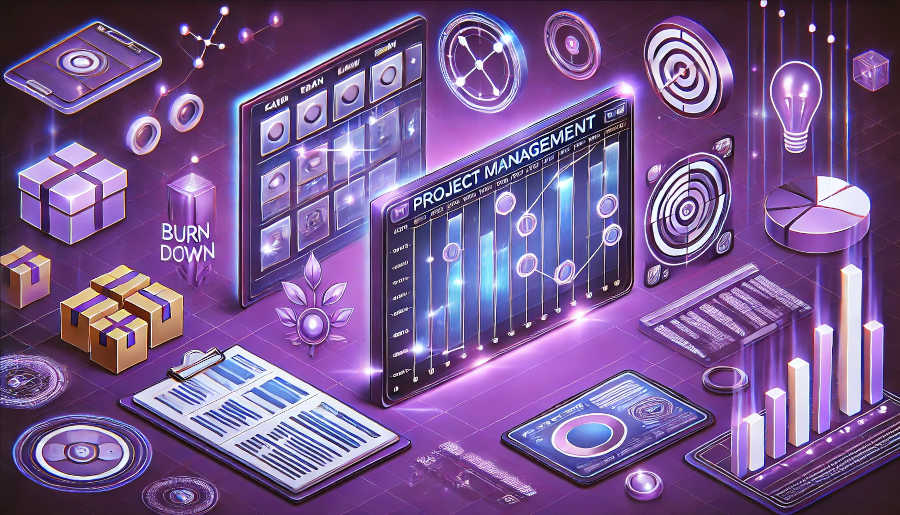Software development methodologies play a crucial role in determining the success of a project. Two prominent approaches are agile development and traditional development. Understanding the cost-benefit analysis of these two methods is essential for organizations to make informed decisions when embarking on software projects. Agile development has gained significant popularity in recent years due to its flexibility and adaptability, while traditional development, with its structured and sequential approach, still holds its ground in certain scenarios. This analysis will delve into various aspects such as cost, time, quality, and customer satisfaction to provide a comprehensive comparison.
Agile development emerged as a response to the limitations of traditional development in a rapidly changing business environment. It emphasizes collaboration, flexibility, and iterative development. On the other hand, traditional development follows a linear, phase-by-phase approach, where each stage must be completed before moving on to the next. By examining the costs and benefits associated with both, businesses can select the methodology that best suits their project requirements, resources, and strategic goals.
Cost Analysis
Initial Investment
In terms of initial investment, traditional development often requires a more substantial upfront commitment. This is because it typically involves detailed planning, extensive documentation, and a well-defined scope from the start. The need to plan every aspect of the project in advance means that significant resources are dedicated to activities such as requirements gathering, design, and creating comprehensive project plans. This can involve hiring specialized professionals, purchasing software tools for planning and documentation, and allocating a large portion of the budget to these initial stages.
Agile development, in contrast, has a relatively lower initial investment. It focuses on delivering value early and often, with less emphasis on upfront planning and documentation. The team can start developing with a basic understanding of the requirements and refine them as the project progresses. This allows for a more flexible allocation of resources, as the team can adapt to changes without having to rewrite extensive plans or documentation. However, it's important to note that while the initial investment may be lower, agile projects can still require significant resources depending on the complexity of the project.
Ongoing Costs
Ongoing costs in traditional development can be relatively stable once the project is in motion. Since the scope is fixed early on, there are fewer changes that can disrupt the budget. However, if changes do occur, they can be extremely costly. Modifying the design or requirements mid-project may require reworking large portions of the code, updating extensive documentation, and potentially delaying the project. This can lead to additional costs in terms of labor, as developers may need to work overtime, and may also result in penalties if the project misses its deadlines.
Agile development has more variable ongoing costs. The iterative nature of agile means that changes are expected and incorporated throughout the project. While this allows for better adaptation to market changes and customer feedback, it can also lead to increased costs if not managed properly. For example, if the team constantly adds new features without proper prioritization, it can lead to scope creep, which may require additional resources and time. However, by having regular reviews and feedback loops, agile projects can potentially avoid costly mistakes and make more efficient use of resources in the long run.
Time Analysis
Project Duration
Traditional development typically follows a fixed schedule. The sequential nature of its phases, such as requirements gathering, design, development, testing, and deployment, means that each stage must be completed before moving on to the next. This can result in longer project durations, especially for complex projects. Any delays in one phase can have a cascading effect on the entire project timeline. For instance, if the requirements gathering phase takes longer than expected due to difficulties in getting clear input from stakeholders, it will push back the start of development and subsequent phases.
Agile development, on the other hand, aims to deliver value in shorter cycles. By breaking the project into smaller sprints, typically lasting two to four weeks, the team can start delivering working software early. This iterative approach allows for faster feedback and course correction. If a particular feature proves to be more challenging than expected during a sprint, the team can adjust the plan for the next sprint. This flexibility often results in shorter overall project durations, especially for projects where the requirements are likely to change.
Time to Market
In terms of time to market, agile development has a significant advantage. The ability to release working software in shorter intervals means that products can reach the market faster. This is crucial in industries where competition is fierce and being the first to market with a new product or feature can provide a competitive edge. For example, in the mobile app industry, companies that can quickly respond to market trends and user demands by releasing updates and new features are more likely to succeed.
Traditional development, with its longer project cycles and fixed scope, may take longer to get a product to market. By the time the product is finally ready for release, the market may have changed, and the product may no longer meet the current needs of the customers. This delay can result in lost opportunities and a decrease in the product's potential market share.

Quality Analysis
Defect Detection and Resolution
In traditional development, defect detection mainly occurs during the testing phase, which comes towards the end of the project. By this time, a large portion of the code has been written, and fixing defects can be time-consuming and costly. If a major defect is discovered, it may require significant rework, which can impact the project schedule and budget. However, the extensive documentation and structured approach in traditional development can sometimes make it easier to trace the source of the defect and implement a proper fix.
Agile development, with its continuous integration and testing practices, detects defects much earlier in the development process. Since the team is constantly building and testing the code in short sprints, any issues are identified and resolved quickly. This reduces the likelihood of defects accumulating and becoming more difficult to fix. Additionally, the close collaboration between developers, testers, and other stakeholders in agile projects allows for a more comprehensive approach to quality assurance.
Customer Satisfaction and Quality of Fit
Customer satisfaction is closely related to the quality of the product. In traditional development, the customer's involvement is mainly limited to the requirements gathering phase at the beginning of the project. By the time the product is delivered, the customer's needs may have changed, leading to potential dissatisfaction. The fixed scope also means that there is less room for incorporating late changes based on customer feedback.
Agile development, on the other hand, places a strong emphasis on customer collaboration. The customer is involved throughout the project, providing feedback during each sprint review. This allows the team to ensure that the product is meeting the customer's expectations and can be adjusted accordingly. The iterative nature of agile also enables the team to fine-tune the product based on real-world usage and feedback, resulting in a higher quality of fit for the customer's needs.
Flexibility and Adaptability
Response to Change
Traditional development is less flexible when it comes to handling changes. Once the project plan is set, any significant changes to the requirements or scope can be extremely disruptive. This is because the sequential nature of the development process means that changes in one phase can have a domino effect on subsequent phases. For example, if a new requirement is introduced during the development phase, it may require reworking the design, modifying the code, and retesting the entire system. This can lead to delays, increased costs, and potential quality issues.
Agile development, in contrast, is designed to embrace change. The iterative and incremental nature of agile allows the team to easily incorporate new requirements or changes. The short sprints provide opportunities to review and adjust the project plan based on new information. This flexibility enables the team to respond quickly to market changes, customer feedback, or emerging technologies, ensuring that the final product remains relevant and competitive.
Team Collaboration and Adaptability
In traditional development, the team members often work in silos, with each phase being the responsibility of a specific group. This can lead to communication gaps and a lack of collaboration between different parts of the team. For example, the developers may have limited interaction with the testers until the testing phase, which can result in misunderstandings and delays.
Agile development promotes a high level of team collaboration. The cross-functional nature of agile teams means that developers, testers, designers, and other stakeholders work closely together throughout the project. This constant interaction allows for better communication, knowledge sharing, and problem-solving. The team can adapt quickly to changes in the project environment, as everyone is involved in the decision-making process and has a shared understanding of the project goals.
Conclusion
In conclusion, both agile development and traditional development have their own set of costs and benefits. Traditional development may be more suitable for projects with well-defined requirements, a stable environment, and a need for extensive documentation. It offers a more structured approach that can provide predictability in terms of cost and schedule, although it may be less flexible in the face of changes.
On the other hand, agile development is a better choice for projects where flexibility, speed, and customer collaboration are crucial. It allows for faster time to market, better quality through continuous testing, and the ability to adapt to changing requirements. While agile may have more variable costs and require a different approach to project management, the benefits it offers in terms of responsiveness and customer satisfaction can be significant.
Ultimately, the decision between agile and traditional development should be based on a careful consideration of the project's specific requirements, the organization's culture and resources, and the market environment. By understanding the cost-benefit analysis of these two methodologies, organizations can make an informed choice that will lead to the successful delivery of software projects. It's important to note that in some cases, a hybrid approach that combines elements of both agile and traditional development may also be a viable option, allowing organizations to leverage the strengths of each method while mitigating their weaknesses.
ARTICLE TITLE :Cost-benefit analysis of agile development vs. traditional development ,AUTHOR :ITpmlib

















